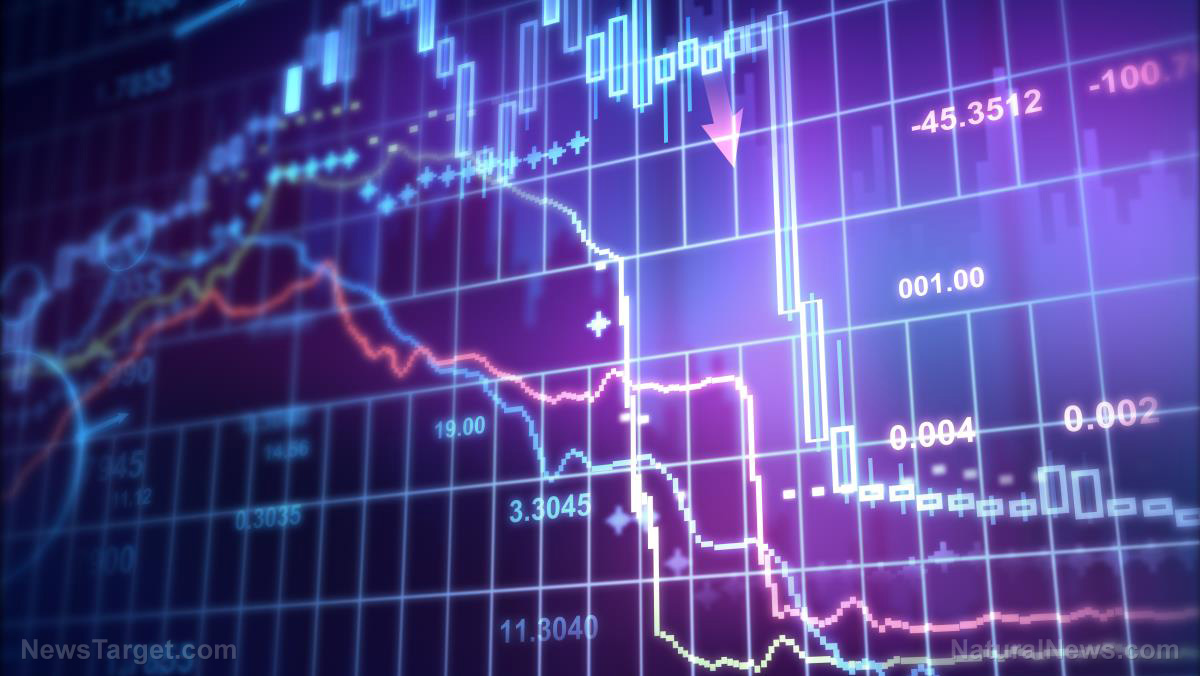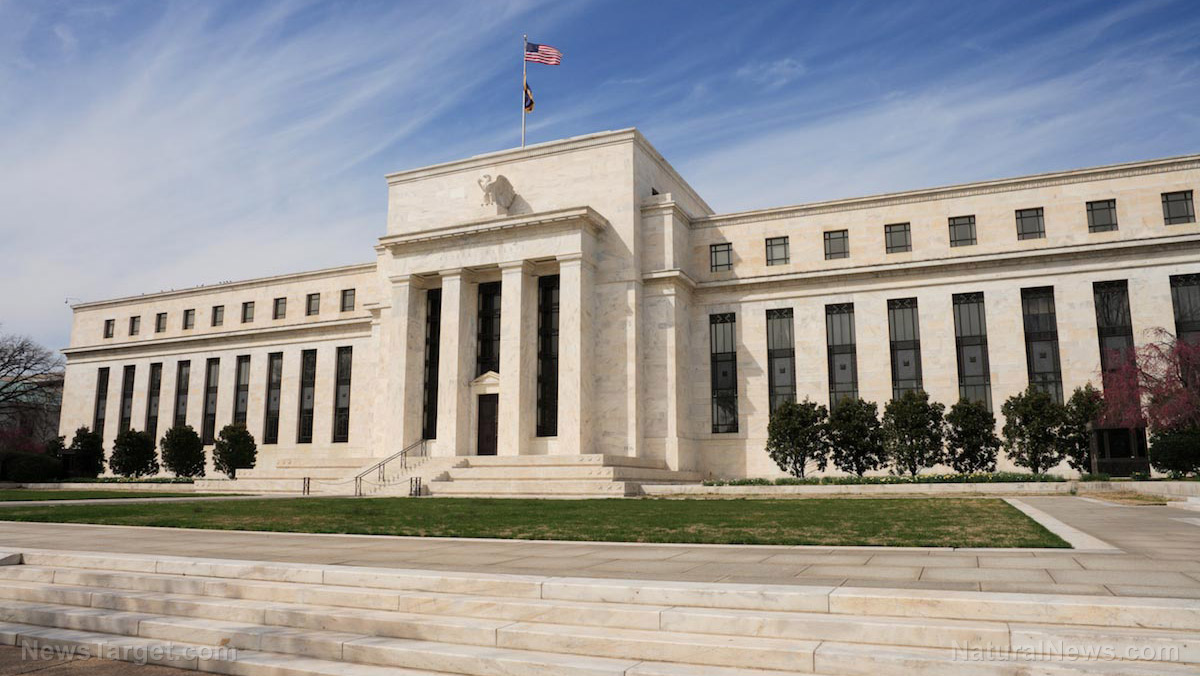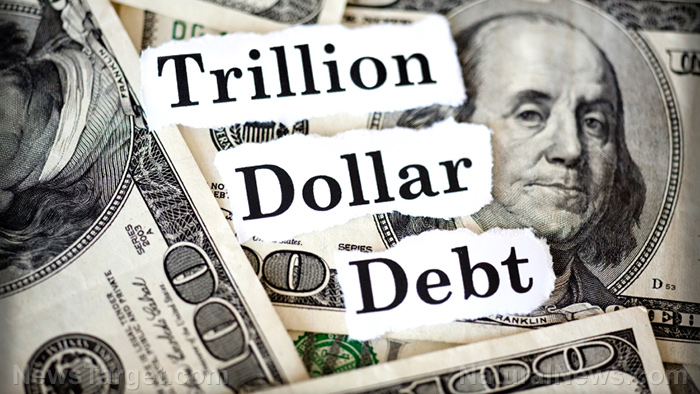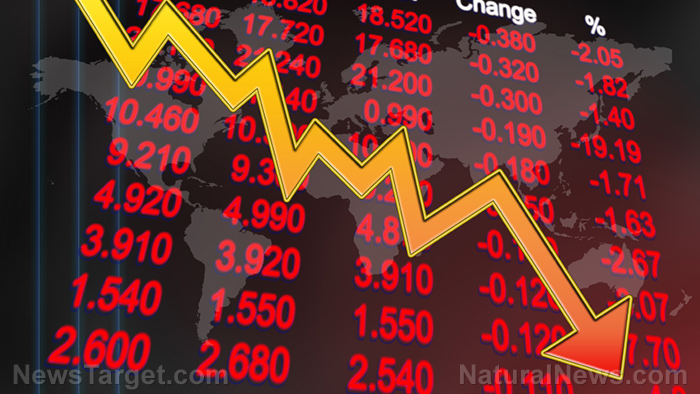US stocks leading the global market selloff; European financial markets holding up better (for now)
05/30/2022 / By Mary Villareal

The Dow Jones Industrial Average has plunged by 12 percent year-to-date, the S&P 500 by 18 percent and the Nasdaq Composite Index by about 28 percent. Meanwhile, the United Kingdom’s FTSE 100 index went up by more than one percent, Spain’s IBEX 35 Index dipped by 0.1 percent and the Nikkei 225 Index lost seven percent.
This means the European financial markets have managed to remain stable this year while the U.S. stocks are now leading the global market selloff.
According to Yardeni Research, this is the third-worst stock market selloff for the S&P 500, which plunged by 19.7 percent in late 2018 and 19.4 percent in 2011.
Major MSCI indexes that track global large and mid-cap stocks also managed to outperform the S&P 500, even in U.S. dollar (USD) terms. The MSCI U.K. Index went down by only 5.1 percent in USD but was up 2.3 percent in local currency. The MSCI Japan Index, on the other hand, was down by 15.6 percent in USD and 6.3 percent in local currency.
MSCI’s global equity index excluding the U.S. market and the MSCI’s emerging markets index also dropped in U.S. dollar terms by 14.9 percent and 16.1 percent, respectively.
Only MSCI EMU Index, which represents large and mid-cap stocks in developed markets in the European Union underperformed S&P 500, falling by 20.9 percent USD year-to-date.
Meanwhile, Canadian equities are also performing better than their U.S. counterparts, with the Horizons S&P/TSX 60 Index exchange-traded fund (ETF) down by only four percent. These invest in the Royal Bank of Canada, Enbridge, Canadian National Railway and Brookfield Asset Management.
Edward Yardeni, president of Yardeni Research, said the problem seems to be “mostly attributable to the underperformance of the S&P 500 Growth MegaCap-8,” or the eight largest companies that contributed to the market’s decline: Alphabet, Amazon, Apple, Meta, Microsoft, Netflix, Nvidia and Tesla.
Forward price-to-earnings (P-E) multiples, which measure stock valuations compared to forecasted earnings, also spotlight a contrast between U.S. stocks and foreign MSCI composites.
The MSCI USA Index currently has a forward P-E ratio of 17.0, compared to the MSCI UK All Cap Index at 10.1.
This could be the start of European value stocks getting ahead of U.S. growth equities over the next decade, as per Albert Bridge Capital CIO Andrew Dickson.
“We are very much drawn by how attractive European value stocks are vs. U.S. growth stocks today, and this is where we are spending a lot of time combing for investment ideas,” he wrote in an op-ed, adding that European benchmarks are value-heavy compared to U.S. benchmarks, which are growth-heavy.
European markets enjoying inflows
Dickson said it should be considered that in a more normal market environment, Europe might have a lot of catching up to do, especially over some value stocks across the continent.
American investors that previously shunned European opportunities should now consider doing so, as do Europeans and other global investors who have overweight U.S. growth but underweight European values.
Investors are also seeking opportunities in Europe. European ETFs enjoyed their 25th consecutive month of inflows in April, as per Vanguard data. Equity ETFs received $11.3 billion in cash flows, while fixed-income ETF inflows amounted to $4.3 billion.
Global funds are performing better than the U.S. because of monetary policies. Moreover, the Federal Reserve has been aggressively combative to fight inflation, while the European Central Bank (ECB) only recently unveiled its own plans to increase the deposit rate from subzero territory to combat the rampant price inflation.
Federal Reserve Chair Jerome Powell said earlier this month that the U.S. central bank will raise interest rates until there is “clear and convincing” evidence that inflation slows down. Chicago Fed President Charles Evans also said that he sees a half-point rate increase in June’s meeting, and probably after.
This difference in central bank policies is the main factor in the relative performance of the European and U.S. equities, according to Komson Silapachai, a partner at Sage Advisory Services. He also noted that it will revert over the next three months as the ECB begins raising its deposit rate.
William Stack, a financial adviser at Stack Financial Services, agreed that the U.S. had been faster than Europe in hiking rates. However, investment performance is typically correlated with cycles and the U.S. stocks compared to foreign equities are due to have a reversal. (Related: UNBELIEVABLE: Senate Intel chair dumped over $1.7 million of stock a week BEFORE the market tanked … while downplaying coronavirus threat.)
He said that it usually has a 7.9 years average cycle length of U.S. stocks outperforming foreign, and vice versa. “But the latest cycle of U.S. market outperformance lasted over 11 years, and was overdue for a reversal, historically speaking.”
Follow Bubble.news for more updates about U.S. stocks across global markets.
Watch the video below to know more about the companies affected by the plummeting stock market.
This video is from the Martin Brodel channel on Brighteon.com.
More related stories:
Stock markets drop due to concerns over potential collapse of Chinese real estate market.
“The Big Short” investor warns about “mother of all crashes” for crypto and meme stocks.
Massive meltdown:” 40% of Nasdaq companies are down more than half from their highs.
Sources include:
Submit a correction >>
Tagged Under:
Bubble, Collapse, crash, debt collapse, Dow Jones, economic collapse, economy, finance, financial collapse, government debt, Inflation, market crash, MSCI, NASDAQ, national debt, risk, S&P 500, stock market
This article may contain statements that reflect the opinion of the author
Get independent news alerts on natural cures, food lab tests, cannabis medicine, science, robotics, drones, privacy and more from NewsTarget.com
Get independent news alerts on natural cures, food lab tests, cannabis medicine, science, robotics, drones, privacy and more from NewsTarget.com
RECENT NEWS & ARTICLES
COPYRIGHT © 2017 DEBT COLLAPSE NEWS




















